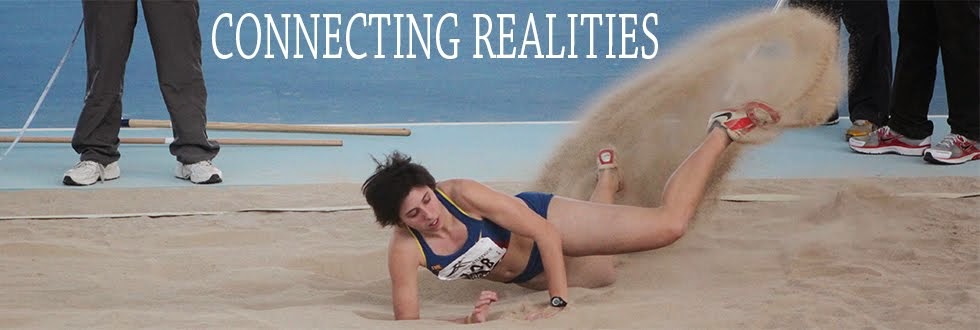Apparently not. Marketing is an essential area
within any business. And javelin throw is an olympic athletics discipline that
consists of throwing a kind of spear as far as you can. With that in mind, it
seems impossible to connect such different things.
Although some Marketing researchers may
discredit me for the following statement (and I’d understand it), I’ll do it
anyway:
“In my opinion, if you
know how to execute a good javelin throw, you can also launch a successful
marketing campaign.”
A javelin throw consists of four stages: the
preparation phase, the acceleration phase, the throw itself, and the monitoring
phase. When you have to launch a marketing campaign, you can consider the same
stages: a preparation phase, an execution phase, the launch itself, and the
monitoring of the campaign.
PREPARATION STAGE
Based on this objective, you
can make other key
strategic decisions: who your target audience should be; what behaviour change
you need to get from your target audience; and what type of immediate response
you want to elicit from your audience. This allows the marketer to understand
what the best executional approach may be in terms of the most appropriate type
of message and media. The athlete follows the same process in deciding the optimal
balance between speed and strength based on the mark he/she needs to reach.
PREPARATION STAGE
Once you’ve set your objective, you can enter
into what can be called the execution stage, which represents the acceleration
phase of the athlete. During this phase, the objective shifts from preparation
to getting yourself into the best possible position to throw.
In
this phase, the athlete runs sideways, and has seven steps to position himself
and the javelin correctly and to achieve the highest speed at the end, just
before the throw. During this part of the execution stage is when the marketer
should determine the exact details of how to reach the audience, how to tell their
story to connect with emotions, and the balance of channels and budget needed.
ACCELERATION
STAGE
Connecting again with the athlete’s experience, the final score of the throw depends heavily on the balance of speed-strength I have mentioned before: the faster you can run and control yourself to put the needed strength at the end of the shot, the longer your shot will be. The word “control” here is important. Your optimal speed is the maximum speed at which you can control the shot, not your maximum speed. It’s easy to apply this to the communication campaign: companies don’t have unlimited resources, and due to this scarcity, they need to find a good balance between them; that is, allocating resources, as well as the athlete does with his/her strength and speed. The word “control” in companies remains with the same importance. Marketers have to consider carefully the reactions to their campaigns, which is beyond their direct control. Here is when the possibilities and disadvantages of digital social media come in. It makes your company lose some control over the scope of a campaign due to the two biggest powers of this new tool: immediacy and scale.
As I’ve said before, the athlete has seven
steps to adapt the perfect position to execute the shot. Before launching a
campaign, seven steps should also be considered as a checklist to ensure that
your campaign has everything it needs to gain a strong response. Although that
doesn’t mean that it’s actually going to happen. These seven steps are the
following ones:
- It's visual and surprising
- It matches your brand / value proposition
- It has a clear message
- It connects with the emotions of the audience
- It's directed to your target audience
- It's simple
- It's launched at the right rime
THROW ITSELF
And then, when the acceleration stage finishes,
it’s the turn for the throw itself. The most important thing here is the angle.
Unfortunately, there’s no optimal angle. In athletics, it depends on two main
factors: first, an external factor which is the wind, and secondly, an internal
factor which is your own conditions; that is your personal speed-strength
balance. The objective is to throw the javelin with an angle that minimizes the
friction between the javelin and the wind and maximizes the lift of the javelin
in the air. Usually this angle varies from 30 to 40 degrees.
When launching a communication campaign, there
are also factors that affect the campaign. First of all, external factors such
as the stage of the industry in its life cycle, the competitors, consumers’
trends, etc; and secondly, internal factors like the company’s resources.
Depending on that, the marketer should decide to launch the campaign at one or
another angle.
THROW ITSELF
But one common quote among athletes is that the
throw is not over until the javelin is stuck in the grass. That also applies to
a marketing campaign. What I want to point out here is that as any action, the
measurement of the results is an essential part because otherwise you won’t be
able to learn from any of those actions.
MONITORING STAGE
As athletes, we expect to throw as far as
possible; as well as marketers expect to reach the maximum of their target
audience with the campaign. But when the shot is completely finished, that is,
when the campaign is over, you cannot do anything to change the scope you have
achieved. However, as the javelin is stuck in the grass, your communication has
stuck your company on your consumers’ minds and the only thing you can do then
is hope for this positioning to be aligned with the value proposition of your
brand.
I want to finish this article with a quote by
Les Brown that can be applied to almost everything you do in life:
“Shoot
for the moon. Even if you miss, you’ll land among the stars.”













